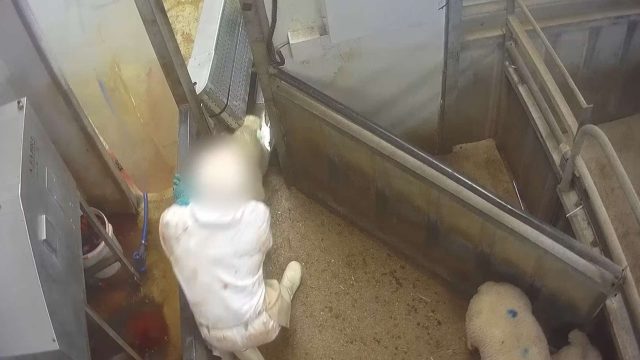The AVS Association does not accept any stunning method whatsoever, and this applies to all animals slaughtered by us (sheep, cattle, poultry).
Among other things, we guarantee that the animal is alive at the time of bleeding.
Regarding stunning, and more specifically electronarcosis applied to poultry, which is one of the stunning methods mandated by legislation. Muslims and Jews can benefit from a derogation allowing them not to use stunning in the context of ritual slaughter, provided they respect certain conditions such as restraint (the obligation to hold animals at the time of bleeding). In practice, Jews almost always use this derogation, while Muslims do so much less frequently.
In fact, electronarcosis is a process intended to stun poultry before they are bled, to spare them the suffering of slaughter. This process involves sending an electric shock to poultry by passing them through an electrically charged water bath. In reality, the primary objective is economic, because thanks to this electric shock, poultry are immobilized, allowing slaughterers to bleed many more chickens, and it’s even possible to bleed them automatically with a mechanical disc (in the form of a circular saw placed at the animals’ necks).
However, several problems need to be raised from an ethical, scientific, and religious perspective.
First, it should be noted that among stunning practices, electronarcosis applied to poultry is the most contested by animal welfare associations and scientists. Indeed, it has been demonstrated that in an industrial context, electronarcosis often proves to be an additional suffering inflicted on animals (See ‘The Halal Market: Between Religious References and Industrial Constraints,’ which refers to several scientific reports).
Aware of this problem and in order to increase the effectiveness of electronarcosis, the European Commission adopted Regulation (EC) No 1099/2009, which came into force on January 1st. This regulation provides for electrical parameters powerful enough to ensure stunning, but so powerful that they kill the animals.
Very clearly, this would lead to these animals being considered haram, as electronarcosis would kill them under such conditions.
However, some organizations claim to use lower parameters to ensure that poultry do not die.
First, such parameters would be illegal, not only because legislation imposes precise and lethal parameters, but especially because this same legislation prohibits the use of electronarcosis merely to immobilize animals.
This would also be ethically intolerable, as it would involve inflicting suffering on the animal, which would fully feel the pain before bleeding, whereas all Islamic teachings advocate for treating animals well before bleeding.
Finally, even assuming that people disregard legislation and ethical values, a major problem remains: even by lowering the parameters, it is impossible to guarantee that poultry will not die as a result of electronarcosis.
A large number of other factors (such as transport duration, the cleanliness of the water bath, the level of lighting in the slaughterhouse, external and internal temperatures) significantly influence the results. Indeed, poultry (especially those we consume, which are raised in battery cages for very short periods) are very fragile animals from a cardiac perspective. This is why it is impossible to GUARANTEE that NO poultry will die as a result of electronarcosis.
Furthermore, videos circulating that show poultry moving after the electronarcosis bath are a deception. Indeed, pre-slaughter electronarcosis is never practiced this way in slaughterhouses because its entire purpose would be lost. On the one hand, poultry suffer enormously, and on the other hand, let’s remember that the objective of electronarcosis is also to immobilize for profitability. If, on the contrary, electronarcosis were to cause stress and uncontrolled movements in poultry, slaughterers would no longer be able to bleed them under good conditions. Regardless, even so, a risk of mortality due to electronarcosis will persist.
Furthermore, many people use fatwas asserting that electronarcosis would be halal ‘ON CONDITION THAT IT DOES NOT KILL THE ANIMALS’. Firstly, this condition is not operable, as we have previously demonstrated, and therefore the fatwa is not applicable to poultry. Secondly, many institutions maintain confusion between electronarcosis practiced on poultry and that practiced on sheep. Indeed, unlike the case of poultry mentioned above, it is recognized that it is possible to guarantee that electronarcosis does not kill when practiced on sheep with precise parameters. Sheep are much more resilient. We do not practice electronarcosis on either sheep or poultry, and therefore have no interest in acknowledging its practicability on sheep but not on poultry, other than the pursuit of truth. Despite this, several councils of scholars also prohibit electronarcosis on sheep. Finally, it should be known that the vast majority of Muslim scholarly councils categorically prohibit the practice of electronarcosis on poultry (complete fatwas will be available soon on our website).




